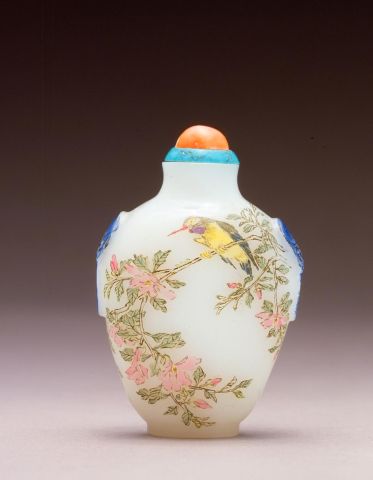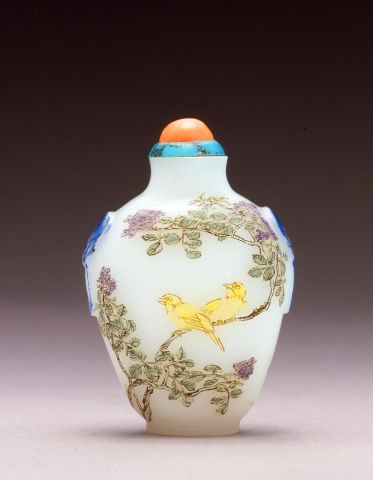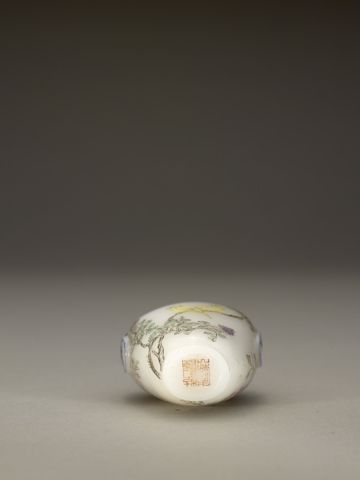


Bottle ID: 00233
YANGZHOU, WHITE, BIRDS ON TREES
Date: 1770-1820
Height: 48 mm
Glass, of rounded shield shape, with shoulders tapering to an everted lip, and with a neatly carved footrim; enameled in famille rose colors on a milk-white ground and decorated on one side with a pair of birds on a leafy blossoming tree; the reverse with a bird perched on a blossoming tree; the sides molded and enameled with mock mask and ring handles, the base with an iron-red four character Qianlong nianzhi mark in seal script.
Attributed to Yangzhou.
Similar Examples:
Crane Collection no. 449.
Christie, Manson & Woods, St. James's, London, October 9, 1974, lot 52, The Ko Family Collection, Part V.
Kleiner, Robert. Chinese Snuff Bottles in the Collection of Mary and George Bloch, 1995, pp. 54-55, no. 27.
Low, Denis S. K. More Treasures from the Sanctum of Enlightened Respect, 2002, p. 25, no. 22.
Provenance:
Hugh Moss [HK] Ltd.
Exhibited:
Annual Convention ICSBS Toronto, October 2007
Published:
JICSBS, Winter 2008, p. 11, figs. 13a and 13b
The Crane Collection has a number of enameled glass bottles which appear to fit into a "non-imperial" group produced in an enameling center outside the Palace Workshops. It is documented that Yangzhou is such a place with Wang Shixing, a famous Qing enameler known as "the enamel-ware king", residing there. The Bloch Collection has two enamel bottles which subject matter appears on classic Yangzhou School glass overlay bottles, and the painterly style and genre scenes are typical of this group.
This bottle is unusual in a number of respects. It is one of the few with raised relief decoration on the mock mask and ring handles, causing the "scene" on the bottle to be divided in two, also a classic feature of Yangzhou glass overlay bottles. The shape of the bottle is similar to a porcelain or jade form rather than a glass form. Its mark is written in seal script, as would be expected from this group, although it is drawn in a square rather than the more usual straight line. However, this may simply be a function of the bottle's tapering form at the base. The enamel itself is wonderfully painted, with delicacy and fluidity, not always seen in this somewhat prolific group.
< Back to full list
 English
English 中文
中文